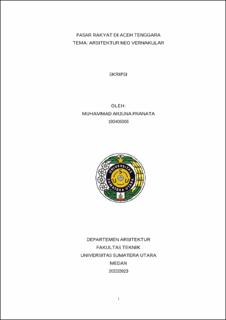| dc.description.abstract | With the government regulation Law Number Seven Year Two Thousand and
Fourteen concerning Trade, the naming of traditional markets has been changed to
people's markets. The people's market is a place to sell and is held, built and
regulated by the government, regional government, private sector or owned
business entity. Shops, kiosks, stalls, or tents arranged by cooperatives, community
organizations themselves or small and medium traders with UMK-M by
implementing a bargaining system when buying and selling goods (Pemendag,
2021), in addition to shops, kiosks, stalls and tents The people's market can be in
the form of a stretch/ground/jongko. In an effort to improve trade facilities and
infrastructure both physically, materially, socially and culturally, and
economically, this is known as the development or revitalization of trade facilities
(Ministry of Trade, 2021). To increase the selling power between traders, the
government appoints a related agency, namely the trade service to employ and
improve the quality of the people's market management system (UU No. 7 of 2014).
This people's market is managed by the government and is used by the community,
especially those in Bambel District, Southeast Aceh Regency. The design concept
for this people's market is to produce low-rise people's market buildings that are
comfortable for buyers and traders by modernizing the people's market in terms of
facilities and infrastructure as well as the management system in the market and
still maintaining a bargaining transaction system. The concept of applying the
theme of neo vernacular architecture to the people's market is by using the
symbolism of the motifs in the traditional houses of the Alas tribe in Southeast Aceh.
From this concept, it is hoped that it can introduce and preserve local elements in
a more modernized form. | en_US |


